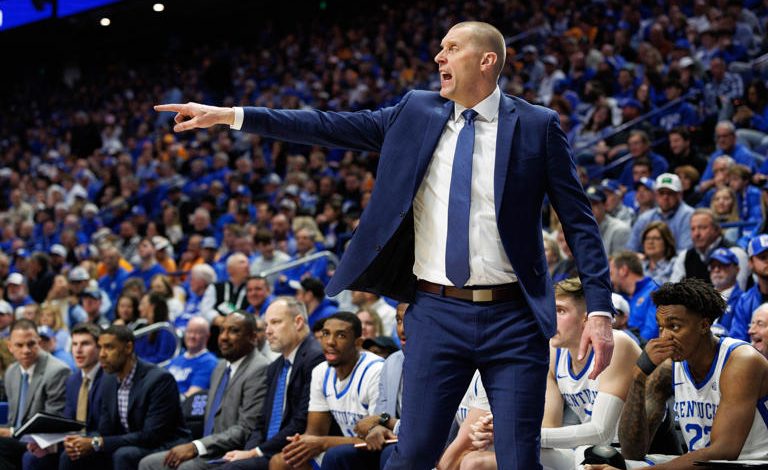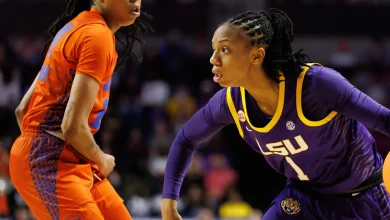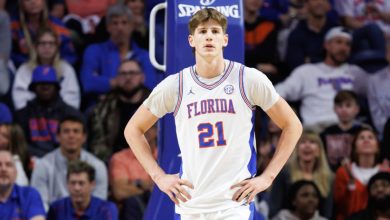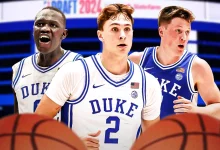Kentucky’s Bold Pursuit of a 7-Foot-2 Prospect in the 2027 Class Sparks Debate Over College Basketball Recruiting Ethics

Kentucky’s Bold Pursuit of a 7-Foot-2 Prospect in the 2027 Class Sparks Debate Over College Basketball Recruiting Ethics
The University of Kentucky has reportedly made contact with a towering 7-foot-2 center from the 2027 recruiting class, igniting intense discussions within the college basketball community. This move, while not unprecedented for a basketball powerhouse like Kentucky, raises questions about the evolving nature of recruiting practices, the pressures placed on young athletes, and the broader implications for college sports.
Kentucky’s basketball program, led by a coach renowned for his ability to identify and develop elite talent, has long been at the forefront of recruiting. Yet, the pursuit of such an exceptionally tall and presumably physically dominant prospect this far ahead in the recruiting cycle is fueling debate over the limits of early recruitment and the ethics involved.
The player in question, though still several years away from entering college, is already generating buzz thanks to his rare combination of height and athletic potential. Reports indicate that Kentucky’s interest comes amidst a growing national competition for securing top prospects early, often at ages where many players are still developing fundamental skills and physically maturing. This development challenges traditional recruiting timelines and the methods programs use to evaluate young athletes.
Critics argue that recruiting players so young, especially those projected to be game-changers due to extraordinary physical gifts, may place excessive pressure on teenagers. The risk of exploitation and undue influence becomes a concern, as these athletes might face unrealistic expectations and intense scrutiny long before they have the maturity to handle it. Furthermore, the ethics of engaging with prospects who may still be in the early stages of their physical and emotional development is a contentious topic in the sports community.
Proponents of Kentucky’s strategy counter that identifying talent early is simply part of staying competitive in the ultra-charged environment of college basketball recruiting. They suggest that early contact allows programs to build relationships, provide mentorship, and support players’ growth holistically. For a program like Kentucky, which prides itself on preparing players for professional careers, securing a high-ceiling athlete like this center early on is seen as an investment in the future.
This case also shines a light on the broader changes happening within college basketball recruiting, particularly regarding the role of technology, scouting networks, and the influence of media. With access to advanced analytics, video highlights, and real-time updates, programs can evaluate players from a much younger age and monitor their development over extended periods. This shift has both benefits and drawbacks—while it allows coaches to discover hidden gems, it also risks placing young athletes under a microscope too soon.
Beyond the ethical and developmental considerations, Kentucky’s recruitment of a 7-foot-2 center from the 2027 class invites discussion about the evolving profile of modern big men. In recent years, the archetype of dominant centers has shifted from purely size-based dominance to more versatile, athletic skill sets. Kentucky’s interest suggests they believe this player possesses not only size but also the mobility and skill to impact the game at a high level, which would fit the evolving style of basketball.
Yet the pressure to live up to such expectations can be immense. History offers cautionary tales of highly touted big men who struggled to transition their early promise into collegiate or professional success. Balancing physical gifts with mental resilience and skill development is crucial—and often overlooked in the hype surrounding young prospects.
Another layer to this story involves the NCAA’s evolving rules around recruiting and player compensation. As debates continue over the rights of college athletes, the timing and nature of recruitment become hot-button issues. Early recruitment could potentially complicate players’ eligibility or impact their ability to benefit from name, image, and likeness (NIL) opportunities. Kentucky’s proactive approach might be an attempt to navigate these new landscapes before they fully take shape.
The controversy also touches on regional recruiting dynamics. Kentucky, located in a basketball-rich state, often competes with neighboring programs for elite talent. Reaching out to a 2027 prospect signals the intensity of this competition, with programs vying for commitments years in advance to build dominant rosters. This can create pressure on families and players to make decisions at an age when their priorities might still be shifting.
Families of young athletes are increasingly caught between opportunities and challenges in these situations. On one hand, early contact from a prestigious program can offer invaluable exposure, resources, and guidance. On the other hand, it can create an environment of heightened expectations and scrutiny, potentially disrupting the natural course of a player’s growth and enjoyment of the game.
Moreover, this development raises questions about the fairness of recruiting advantages. Kentucky’s historical prestige and resources give it an edge in pursuing early prospects, which some argue exacerbates disparities among college programs. Smaller or less well-funded programs might struggle to compete, potentially limiting diversity and parity in college basketball.
The national conversation about recruiting ethics also extends to how media and fans perceive young athletes. Heightened attention on a 7-foot-2 player years before college can lead to unrealistic hype or premature judgments. This environment can distort an athlete’s self-image and put additional mental strain on their development.
Kentucky’s move highlights a trend that isn’t likely to slow down anytime soon. As college basketball continues to evolve, the arms race in recruiting intensifies. Whether this benefits or harms young athletes depends largely on how programs, families, and governing bodies manage the balance between opportunity and pressure.
In the meantime, the basketball world will watch closely to see how this 7-foot-2 prospect’s journey unfolds. Will Kentucky’s early contact translate into a lasting commitment and a successful collegiate career? Or will the early spotlight prove too bright for such a young player? The answers may shape recruiting practices for years to come.
Ultimately, Kentucky’s pursuit of this remarkable center from the 2027 class is more than a recruiting story—it’s a microcosm of the challenges facing modern college basketball. It forces all stakeholders to confront difficult questions about ethics, player welfare, competitive balance, and the true purpose of sports development.
As discussions continue, it will be important to keep the focus on the young athlete’s well-being above all else. After all, behind the towering height and recruiting headlines lies a teenager navigating a complex and demanding world—one where the right support can make all the difference.









